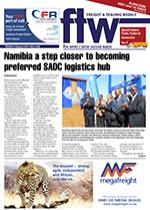Correctly inflated tyres last longer and save fuel, says Stephan van Staden, national agricultural specialist at Bridgestone. “Tyres account for between 20-40% of horsepower loss, and a huge factor is the pressure to which the tyres are inflated in relation to the load carried. “Getting this right requires some work, but it is well worth doing,” he says. The key principle is to ensure that the right amount of tyre surface engages with the working surface (the footprint). If a tyre is overinflated, it will have too small a footprint. There will be excessive wheel slippage, and the fuel consumption will be higher than necessary. In addition, the tyre will wear down quicker. Underinflated tyres have too large a footprint, and there will be too little slippage. The result will be damaged sidewalls, atypical wear patterns and the possibility of drivetrain breakdowns. The easiest method of calculating the correct pressure is to use the static load radius (SLR) as the basis. The SLR is the distance from the centre of the axle to the ground of a loaded tyre under maximum dual load and inflation as stamped on the sidewall of the tyre. Bridgestone says in its commercial truck tyre data book that low-profile 75-series tubeless truck radial tyres may offer several advantages over standard 90-series tubeless tyres, such as increased tread life, lower vehicle height and weight and better handling. Differences in overall diameter, static loaded radius and maximum load-carrying capacity should be considered prior to mounting lower profile tyres, it adds.

